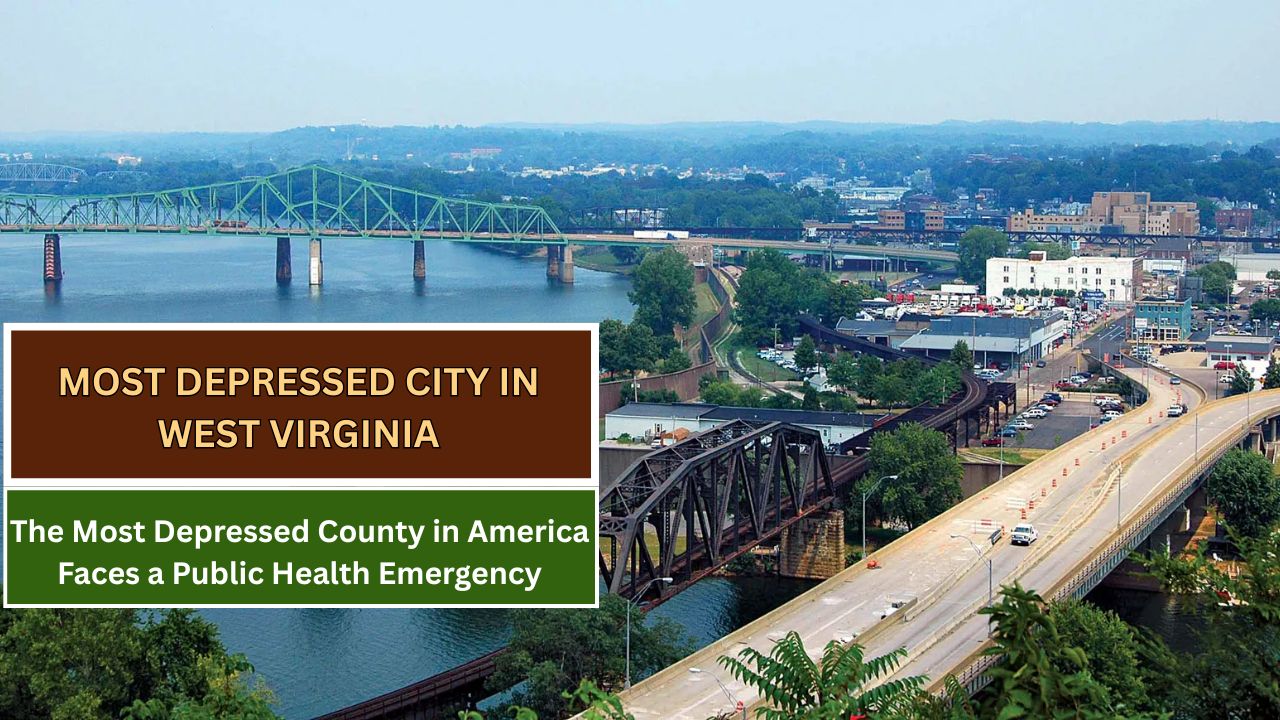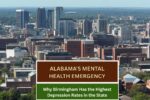Logan County, West Virginia, a rural region once powered by coal and community pride, now holds the troubling distinction of being the most depressed county in the United States. According to a 2023 report by the Centers for Disease Control and Prevention (CDC), nearly 32% of adults in Logan County have been diagnosed with clinical depression—almost double the national average of 18%.
This sobering statistic isn’t just a number—it represents thousands of individuals battling despair in a county plagued by economic collapse, poverty, substance abuse, and limited access to mental health care.
Economic Collapse and Chronic Poverty
Logan County’s economic decline can be traced back to the collapse of the coal industry, which once formed the economic backbone of southern West Virginia. As coal jobs disappeared, unemployment rose, and with it came widespread poverty. According to data from the U.S. Census Bureau, 25% of the county’s 31,000 residents live below the poverty line.
Generational poverty has compounded the issue. With fewer job prospects and little economic mobility, many residents feel trapped—an emotional burden that frequently manifests as depression.
The Opioid Epidemic’s Mental Health Toll
West Virginia has long been ground zero for the opioid crisis. A 2021 report by the National Institute on Drug Abuse found that the state had the highest rate of opioid-related deaths in the nation. Logan County has not been spared. Addiction issues intersect with mental health problems, often leading to a vicious cycle of despair, withdrawal, and overdose.
“The opioid epidemic and the mental health crisis are inextricably linked,” says Dr. Megan Fisher, a psychiatrist recently hired at the Coalfield Health Center, one of the few local medical facilities providing mental health services in the area.
A Lack of Resources and Stubborn Stigma
Another major contributor to Logan County’s depression crisis is the limited availability of mental health care. Before June 2023, the county had no full-time psychiatrist. Even now, mental health professionals are few and far between, and those suffering from mental illness often face long wait times or must travel far for consistent care.
The stigma surrounding mental health also prevents many from seeking help. “In rural communities, mental illness is still seen as a personal weakness, not a medical condition,” says Dr. Fisher.
The state government has recognized the issue but is struggling to meet the demand. The West Virginia Department of Health and Human Resources has initiated programs to increase awareness and accessibility, but progress has been slow.
Chronic Health Issues and Environmental Stress
West Virginians suffer from some of the highest rates of chronic illness in the country. Obesity, diabetes, and cardiovascular disease are prevalent in Logan County, often linked with mental health disorders like depression and anxiety.
According to the CDC, chronic physical illness doubles the likelihood of depression, making holistic treatment essential. Unfortunately, the region’s limited healthcare infrastructure makes integrated care a challenge.
Signs of Hope: Community Efforts and New Initiatives
Despite the bleak statistics, efforts are being made to change the narrative. In June 2023, the Coalfield Health Center hired its first full-time psychiatrist and expanded mental health services to underserved communities in the region. Local non-profits and advocacy groups are also launching anti-stigma campaigns and providing community outreach.
National attention has helped shine a light on Logan County’s struggles. Documentaries and investigative reports have brought awareness and funding, including through federal grants administered via the Substance Abuse and Mental Health Services Administration (SAMHSA).
Looking Ahead
Logan County is not alone in its suffering. West Virginia as a whole reports the highest statewide depression rate in the country at 27.5%, compared to the national average of 18% (CDC Behavioral Risk Factor Surveillance System).
Addressing mental health in these communities requires more than funding—it demands cultural change, healthcare reform, and sustained federal attention.
Until then, the residents of Logan County continue to bear the burden of America’s hidden mental health crisis.
This article has been carefully fact-checked by our editorial team to ensure accuracy and eliminate any misleading information. We are committed to maintaining the highest standards of integrity in our content.

Outside of work, he enjoys playing chess, following cricket, and writing short stories. His commitment to integrity and in-depth analysis strengthens OTE News’ mission of providing trustworthy journalism.




